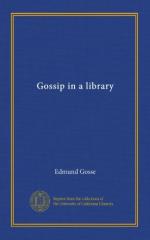By a single allusion to the Epistolary Poems of Charles Hopkins, “very well perform’d by my Brother,” in 1694, we are able to identify the author of Amasia with certainty. He was the second son of the Right Rev. Ezekiel Hopkins, Lord Bishop of Derry. The elder brother whom we have mentioned, Charles, was considerably his senior; for six years the latter occupied a tolerably prominent place in London literary society, was the intimate friend of Dryden and Congreve, published three or four plays not without success, and possessed a name which is pretty frequently met with in books of the time. But to John Hopkins I have discovered scarcely an allusion. He does not seem to have moved in his brother’s circle, and his society was probably more courtly than literary. If we may trust his own account the author of Amasia was born, doubtless at Londonderry, on the 1st of January, 1675. He was, therefore, only twenty-five when his poems were published, and the exquisitely affected portrait which adorns the first volume must represent him as younger still, since it was executed by the Dutch engraver, F.H. van Hove, who was found murdered in October, 1698.
Pause a moment, dear reader, and observe Mr. John Hopkins, alias Sylvius, set out with all the artillery of ornament to storm the heart of Amasia. Notice his embroidered silken coat, his splendid lace cravat, the languishment of his large foolish eyes, the indubitable touch of Spanish red on those smooth cheeks. But, above all contemplate the wonders of his vast peruke. He has a name, be sure, for every portion of that killing structure. Those sausage-shaped curls, close to the ears, are confidants; those that dangle round the temples, favorites; the sparkling lock that descends alone over the right eyebrow is the passagere; and, above all, the gorgeous knot that unites the curls and descends on the left breast, is aptly named the meurtriere. If he would but turn his head, we should see his creves-coeur, the two delicate curled locks at the nape of his neck. The escutcheon below his portrait bears, very suitably, three loaded muskets rampant. Such was Sylvius, conquering but, alas! not to conquer.
The youth of John Hopkins was passed in the best Irish society. His father, the Bishop, married—apparently in second nuptials, for John speaks not of her as a man speaks of his mother—the daughter of the Earl of Radnor. Lady Araminta Hopkins seems to have been a friend of Isabella, Duchess of Grafton, the exquisite girl who, at the age of five, had married a bridegroom of nine, and at twenty-three was left a widow, to be the first toast in English society. The poems of John Hopkins are dedicated to this Dowager-duchess, who, when they were published, had already for two years been the wife of Sir Thomas Hanmer. At the age of twelve, and probably in Dublin, Hopkins met the mysterious lady who animates these volumes under the name of Amasia. Who was Amasia? That, alas! even the volubility of her lover does not reveal. But she was Irish, the daughter of a wealthy and perhaps titled personage, and the intimate companion for many years of the beautiful Duchess of Grafton.




